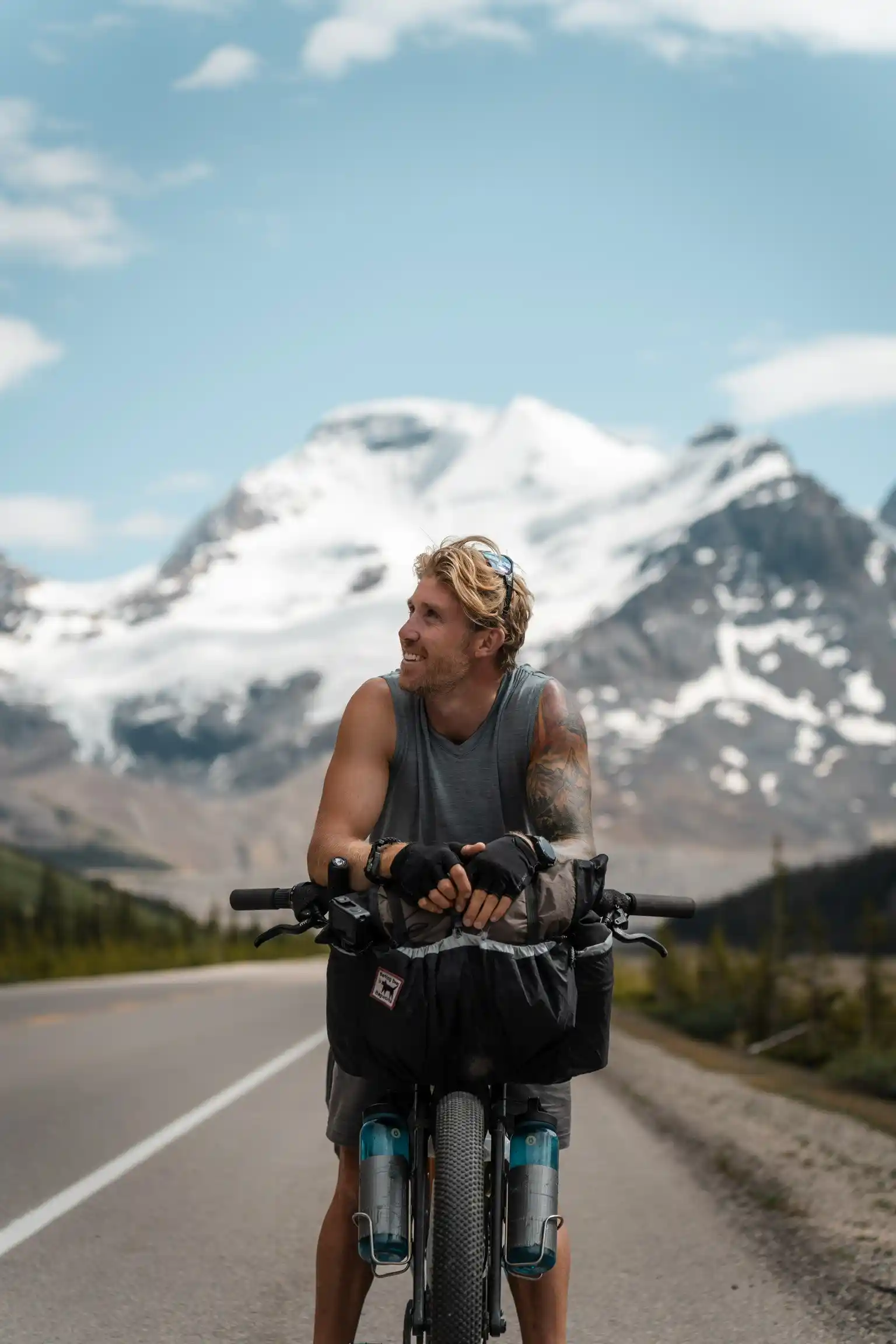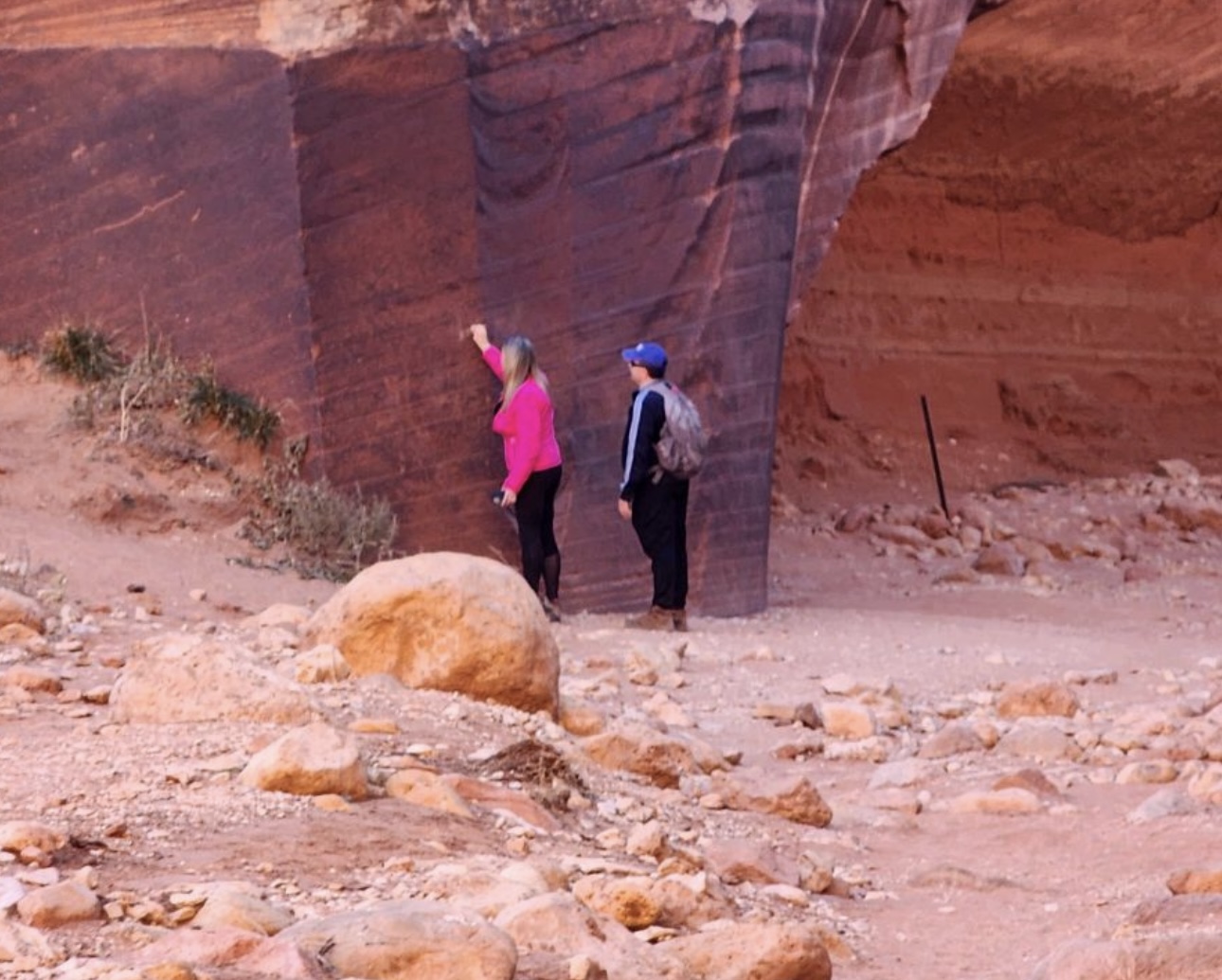Some information may be outdated.
Tristan Ridley has been cycling around the world for almost a decade, covering more than 50,000 miles, six continents, and 71 countries. This year, for the first time in his long journey, his riding brought him to the United States, where he’s attempting to establish a new bikepacking route to take him and future riders through the heart of Utah’s famous riding.

After finishing university in his home country of England, Ridley spent two years hitchhiking and working his way around Australia before buying a bike near the end of 2015. He spent three months cycling in New Zealand and then a year heading back to the UK from Papua New Guinea. Ridley quickly became enamored with this form of travel and kept at it, setting his sights on a long, meandering journey around the world.
In the years since he began, Ridley has spun his lifestyle into a way to make a living. He partners with brands and creates content for Patreon, YouTube, Instagram, and his personal blog, where tens of thousands of followers track his journey. He spent most of 2024 cycling through British Columbia and Alberta before joining the Great Divide Mountain Bike Route and heading into the United States. The Great Divide follows the Continental Divide from Alberta all the way down to the border of the U.S. and Mexico and is well-known as the route of the Tour Divide Race.
Ridley hopped off the Great Divide in Breckenridge to make his way west through Utah, with plans to head southwest toward Baja, Mexico, where another famous route lies. The Baja Divide spans more than 1,700 miles down the Baja California Peninsula, connecting the Pacific Ocean with the Sea of Cortez. The Great Divide and the Baja Divide are two of the most well-known bikepacking routes in North America, and Ridley is connecting the two. Part of that journey brings him right through Utah, where he’s designing a route that he hopes will allow riders to experience the famous biking around Canyonlands National Park.
“The whole process of designing a route for other people is amazing,” Ridley said. “You need to really know a place pretty well, do a lot of planning and research and exploration, talking to locals, getting the scoop on what’s good and what’s not.”
He hopes that other riders will be able to follow his route in Utah, whether they’re doing it as a one-off trip or following a similar path of connecting the Great Divide and Baja Divide.

Ridley originally intended to create a full route to connect the two famous trails, and is now focusing on the Utah section, linking Moab to St. George. Linking existing routes such as the Colorado Trail and Kokopelli has proved a unique challenge, requiring riders to have a setup capable of technical singletrack and longer, remote sections necessitating heavy water and food carries. Ridley hopes that dialing in the Utah section will open the route to more riders who may not have a setup that can straddle those two different disciplines.
His time spent in Moab marks the start of the route-building process.
“I’m just so giddy with excitement for how good it’s going to be,” Ridley said. “It wasn’t always easy in Colorado to find dirt tracks that were fun on a bikepacking rig without having to do quite a lot of pavement connectors. Whereas in Utah, I have the opposite problem. There are too many options, it’s genuinely challenging. That’s the challenge of route development, but it’s awesome. It’s so nice to have so many options and so much choice.”
Ridley has explored many unique corners of the world by bike, and he sees similarities in Utah’s landscape to parts of the Middle East and Jordan – but he says that this area is especially unique.
“There’s nowhere quite like this part of the world,” he said. “It’s so special, and it’s just so stunning. I don’t think I could ever tire of it. It’s definitely not going to be my last time in Moab, that’s for sure.”
Ridley made the most of his time in the area, riding several of the famous routes in the region. He planned to cross over from Colorado via the famous Kokopelli Trail, but some extreme bad luck kept him from completing that bucket list item. Ridley’s bike runs a belt drive instead of a chain, and he snapped the belt on a steep climb – and then immediately snapped his backup. With no way to repair it on trail, he had no choice but to hitch a ride to Moab to wait for his new belts to arrive.
“Unfinished business – that’s another reason to come back,” Ridley said of the Kokopelli.

With his bike up and running again, he was able to do a two-day loop up La Sal Loop Road and down Porcupine Rim, in addition to riding the famous White Rim Trail fully self-supported. His highlight was a sunrise at Dead Horse Point following the White Rim. He was also able to experience Moab’s other outdoor adventure offerings, including climbing Ancient Art at Fisher Towers.
On November 4, Ridley set out on his bike toward St. George via Lockhart Basin Trail, and will continue the ride from there, taking about a month with some side adventures and rest days. Once that section is complete, he hopes to publish the route with a third party, such as bikepacking.com, to get visibility and share with fellow riders.
“This whole section of Utah is just truly exceptional for this kind of thing,” Ridley said. “It’s so beautiful, it’s so rugged, it’s so wild and interesting.”
He hopes that creating this new route will encourage locals and visitors alike to explore Utah by bike.
“Just try it. Don’t worry about the gear, whatever bike you’ve got, whatever gear you’ve got – just get out there,” he said. At the end of the day, it doesn’t take a decade riding around the world to be considered a bikepacker – and Moabites are fortunate to have world-class options right at their doorstep.
Appreciate the coverage? Help keep local news alive.
Chip in to support the Moab Sun News.





